A “world-leading” demonstration project, HydroGlen, aimed at helping Scottish farms produce their own green-energy has taken a leap forward.
The James Hutton Institute awarded a £3.2 million contract to Glasgow firm Green Cat Contracting to kick-start the innovative development.
Green Cat will lead the construction work onsite at the Hutton’s Glensaugh research farm near Fettercairn, in Aberdeenshire.
Hutton’s big ambitions for HydroGlen
Knowledge gained from HydroGlen is expected to benefit politicians, farming communities and co-operatives, scientists and others.
It is hoped it will influence policy, spur growth in the number of hydrogen projects across Scotland, and provide technological development, skills training and green jobs.
Ultimately, the aim is to develop green hydrogen production as a reliable source of green energy.
The Scottish Government awarded £6.2m for the project from its Just Transition Fund.
Work is expected to be completed before the end of 2025.
Glensaugh Farm is already home to wind and solar power generation.
HydroGlen’s hydrogen system will comprise an electrolyser, high and low pressure storage, a compression and refuelling system and water purifier.
Hutton’s plans for the site also include a battery energy storage system and electric vehicle charging station.
The institute has hailed the project as a “significant step” towards decarbonising the farming sector.
In particular, it is expected to help cut the carbon emissions of heavy duty vehicles used on farms.
Welcoming the new partnership with Green Cat, HydroGlen development officer Niamh Carr said: “Together, we’re building a cutting-edge pilot farm-scale green hydrogen and renewable energy facility.
HydroGlen could help transform farmers into green energy producers
“HydroGlen is a ground-breaking project aimed at empowering farmers and the agricultural sector to become producers of green hydrogen and renewable electricity.
“It will help farmers reduce greenhouse gas emissions by decreasing reliance on fossil fuels, enhancing energy independence and delivering economic benefits through the production of homegrown energy.”
She added: “Hydrogen serves as a versatile energy carrier, which addresses the intermittency of renewable energy by enabling on-farm storage.
“Farmers can use green hydrogen to fuel vehicles or convert it back into electricity during periods of high energy demand.
“HydroGlen will be a demonstration site, allowing farmers to learn from this project… and adopt its innovative solutions for their own farms and communities.
“Looking ahead, we envision multiple HydroGlen systems across Scotland, enabling farmers to play a pivotal role in decarbonising the sector and helping the country achieve our net-zero goals.”
Green Cat chief executive Gavin Catto said the firm’s 20 years of experience helping the farming and other rural business sectors decarbonise made it “a perfect project for us”.
Acting energy secretary Gillian Martin hailed the first-of-its-kind project as “an exciting example of how our support is driving innovation, supporting job creation and accelerating the decarbonisation of the agricultural sector as we make the switch to net-zero.”
Reliable green energy ‘critical’ for tackling climate change
The Hutton aims to show how farming communities may soon become self-reliant, green-hydrogen power producers, capable of generating all their energy requirements.
A reliable source of renewable energy, such as green hydrogen, is “critical to rural communities at a time of extreme climate change”, the institute said.
And it highlighted how communities throughout Scotland have, in recent years, been left without power for days.
It added: “The switch to self-reliant, net-zero carbon energy producers also has a part to play in combatting increasingly high levels of fuel poverty and in promoting climate-positive farming.
“Scotland’s agricultural sector is currently responsible for around 18% of Scotland’s greenhouse gas emissions.
“The scalable and modular nature of HydroGlen means it can easily be adapted to other farms.”
Key drivers for HydroGlen scheme
The Hutton’s business case for HydroGlen makes the following points:
- Scotland’s rural areas still depend heavily on oil and gas. Vast renewable resources give potential for green hydrogen production to bring energy-independence, efficiency and economic benefits.
- Farming communities can contribute to the energy transition through green hydrogen production, storage and use, representing a significant decarbonisation step for the sector.
- Green hydrogen provides a “particularly promising” decarbonisation strategy for heavy-duty vehicles used in farming systems.
Green hydrogen an ‘exciting solution’ for helping rural areas reach net-zero
Ms Carr added: “Green hydrogen in rural energy systems offers an exciting solution to intermittency of renewable energy supply – a transformative model for contributing to Scotland’s net-zero ambitions – and potential new revenue streams.
“HydroGlen primarily targets the agricultural sector ,which emits circa 18% of Scotland’s GHG (greenhouse gas) emissions.
” Scotland has more than 50,000 farms and in excess of 900,000 people in rural areas.
‘Compelling route’ to cutting emissions
“Modular, flexible and local energy production gives a compelling route to decarbonisation and energy independence.
“HydroGlen will provide a demonstrator for government, farming communities and cooperatives, scientists and others to visit, assess, acquire knowledge and inform development of regulatory and funding support for rural green hydrogen production.”
What is green hydrogen and why is the James Hutton Institute so keen on it?
Green hydrogen is a clean energy source produced by splitting water into hydrogen and oxygen using renewable electricity in a process called electrolysis.
It is widely seen as a promising route to a net-zero future, if production costs fall.
A HydroGlen feasibility study report from 2021 says: “Green hydrogen is emerging as a key component of Scotland’s decarbonisation plans.
“There is a need to demonstrate how farming communities can contribute to the energy transition through green hydrogen production and use, representing a significant step for this sector in helping to address Scotland’s net-zero greenhouse gas emission goal.”
The report continues: “HydroGlen demonstrates the feasibility of enabling farming and other rural communities to become self-reliant, low-carbon energy producers and exporters, generating 100%-plus of their energy requirements (electricity, heating and transport) utilising a combination of renewable electricity, on-site hydrogen production, compression and storage.”
Holyrood is committed to becoming a net-zero greenhouse gas emitter by 2045.
Achieving the target requires huge reductions in energy, heat, transport, industry, agriculture and land use sector emissions.
Our HydroGlen project will play an important role in demonstrating how farming communities can contribute to the energy transition.” The James Hutton Institute
The Hutton’s feasibility study report adds: “Agriculture was reported to be the third-highest emitter of greenhouse gases in Scotland in 2018 and has a vital role to play in meeting Scotland’s net-zero targets.
“Green hydrogen is emerging as a key component of Scotland’s decarbonisation plans.
“Our HydroGlen project will play an important role in demonstrating how farming communities can contribute to the energy transition through green hydrogen production and use.”
A “base case” for the project demonstrated feasibility, but also the requirement for
additional hydrogen storage to cover any periods when demand exceeds
on-site renewable energy production.
It’s all about ‘retrofitting our farms’
Explaining the Glensaugh project back in 2022, Hutton senior scientist Professor Alison Hester said: “At the centre of HydroGlen is a straightforward question – can we retrofit a rural farm and associated community to become energy-independent, using hydrogen as both an energy storage medium and a source of power?
“Our preliminary results show that it is possible, having looked at overall system concepts, energy use patterns, safety, environment and planning.”
How big is Glensaugh and what’s there now?
Glensaugh is the Hutton’s upland research farm and home to the institute’s Climate-Positive Farming initiative. Spanning just over 2,470 acres, it is also home to sheep, cattle, red deer, improved and extensive pastures, moorland, woodland and peatland.
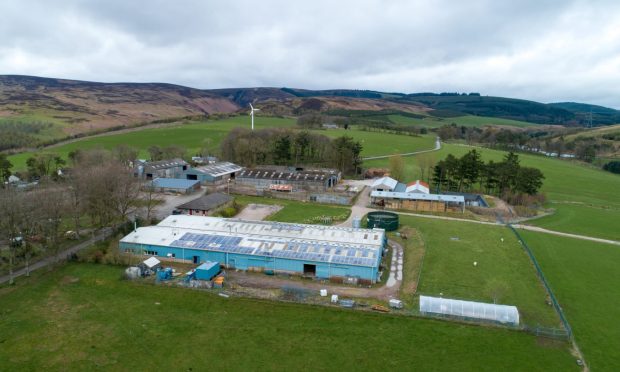
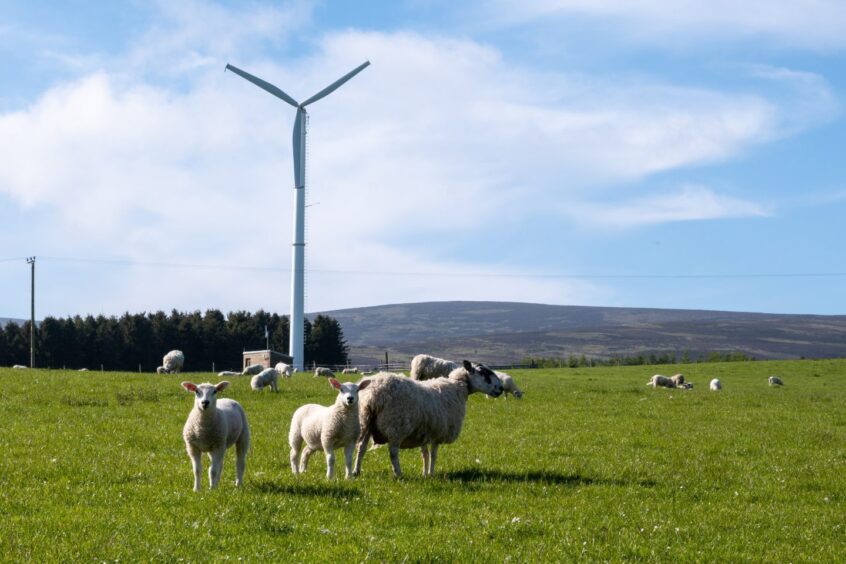
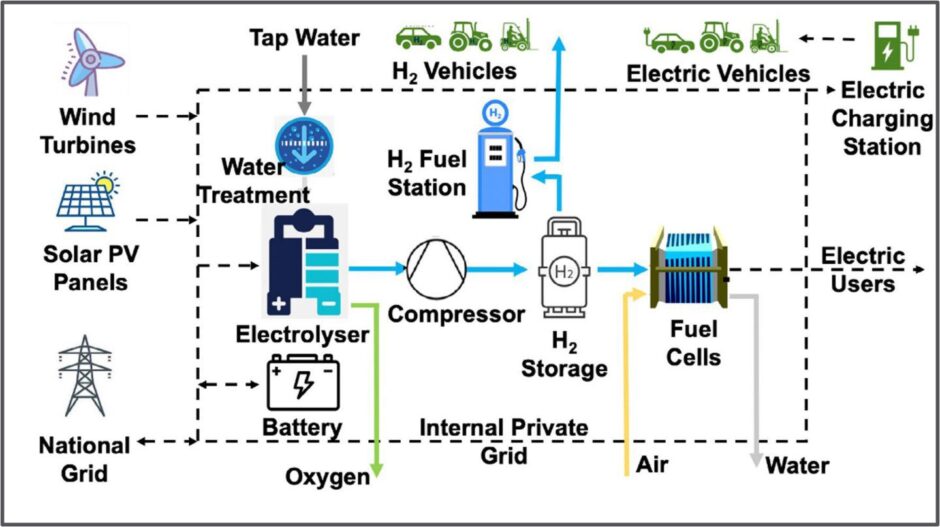



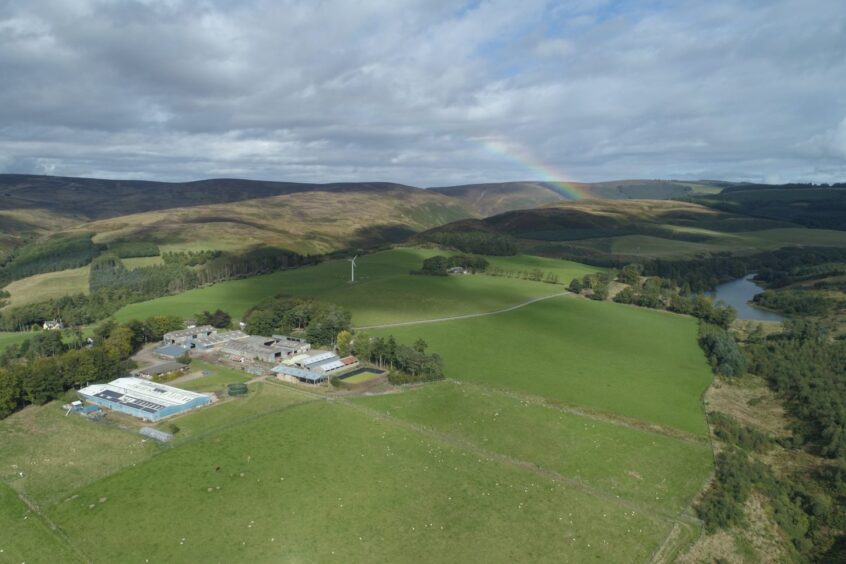
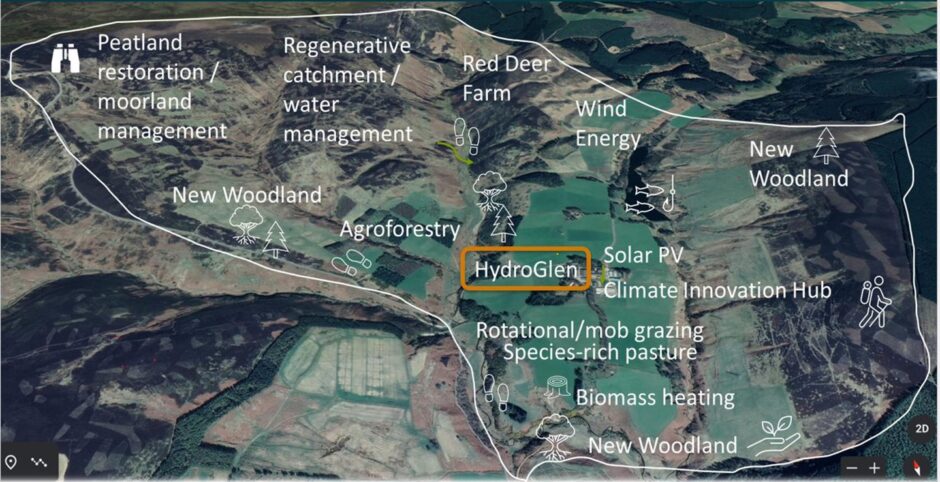
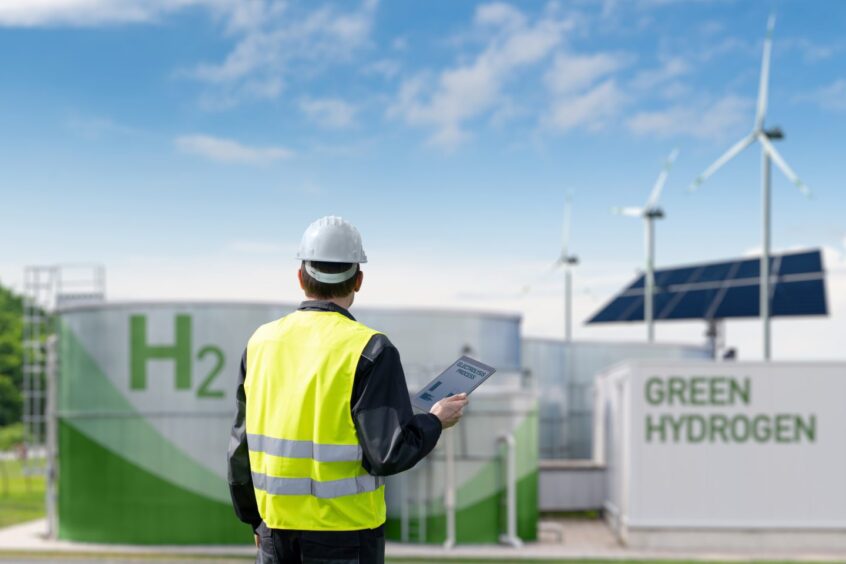
Conversation